Want to crush your 2025 goals? A bullet journal can help you stay organized, track progress, and stay motivated. Here’s a quick guide to get started:
Your bullet journal is your tool to stay focused and flexible throughout the year. Let’s dive into how to make it work for you!
Before setting your 2025 goals, take a moment to reflect on 2024. Look at what worked, what didn’t, and the lessons you learned. This review helps shape your strategy for 2025 and avoids repeating past mistakes. Use a dedicated journal spread to analyze your successes, challenges, and key takeaways from the year.
The SMART framework is a great way to give your goals structure and clarity:
| SMART Component | How to Use It in Your Journal | Example |
|---|---|---|
| Specific | Write detailed goals in dedicated pages | "Read 24 non-fiction books" instead of "Read more" |
| Measurable | Track progress with metrics | Use a monthly tracker listing the books you’ve read |
| Achievable | Break goals into smaller, manageable steps | Aim for 2 books per month |
| Relevant | Focus on goals aligned with your values | Choose books that enhance your career knowledge |
| Time-bound | Set deadlines and review points | Finish 12 books by June 30, 2025 |
After defining your goals with the SMART framework, organize them into categories to ensure a well-rounded approach:
Tie these categories to the priorities you identified during your 2024 review. Many journaling enthusiasts find that adding a future vision letter can help keep their goals in focus while leaving room for adjustments.
To set up useful annual and monthly goal pages, focus on keeping things organized and visually clear. Start with a master list of your yearly goals, then break those into smaller, monthly objectives. Give each goal category (like Career or Health) its own section with clear headers for easy navigation.
To make your goals stand out, use unique visual markers for each category, such as different colors or icons, in your annual spread.
For your monthly spreads, consider including:
Habit trackers are excellent for keeping up with daily actions that align with your bigger goals. Design your tracker based on the habits you want to build. Here are a few tips:
Breaking big goals into smaller milestones makes them feel more achievable. Create spreads specifically for these checkpoints, and include:
To stay on track, schedule these milestones during quarterly reviews (more on this in Section 4). This gives you a chance to adjust your goals as needed and keep up your motivation.
Bring your 2025 goals to life with a vision board in your bullet journal. Use images, quotes, and symbols that align with what you want to achieve. For a digital twist, take inspiration from bullet journal pro Masha Plans, who turned her digital vision board into her device wallpaper [1]. You can also expand your future vision letter (from Section 1) by adding collaged images or printed photos for a more visual approach.
Sprinkle motivational elements throughout your journal to keep your energy high:
These additions not only inspire but also work hand-in-hand with the structured trackers from Section 2.
Once you’ve set up your visual motivators, pair them with rewards to stay on track. Acknowledge even small wins to keep the momentum going. A "Victories" page in your journal can help you document both big and small achievements.
For accountability, try these methods:
Boost your journal’s visual appeal with fun, decorative elements. Use themed sticker kits – like ‘Lilac Dusk‘ – to highlight different goals.
"Your journal has your rules, so if you want to be lazy like me – go for it!" – Masha Plans [1]
Washi tape is also a great tool for organization. Use different patterns to color-code goals or categories, keeping everything neat and easy to navigate.
Regular reviews help you stay aligned with your 2025 goals. Dedicate a "Monthly Review" page in your bullet journal with three sections: Achievements, Challenges, and Adjustments. This keeps things organized and ensures you’re focusing on what matters.
Plan these reviews for the last weekend of each month. Use this time to evaluate completed tasks, spot habit trends, update progress trackers, and make necessary tweaks.
For a broader perspective, set up quarterly spreads. These should include both measurable data (like habit streaks) and personal reflections. These quarterly check-ins work alongside the milestone spreads from Section 2, offering a structured way to reflect and recalibrate.
Life doesn’t always go as planned, and that’s where your journal’s flexibility comes into play. Add an "Adaptation Station" page to track unexpected changes and how they affect your goals. This page helps you adjust and evolve your plans as needed.
When refining your goals, consider:
Keep track of lessons learned from both successes and setbacks. Use a "Victories" page to document everything from major accomplishments to smaller, meaningful wins. This not only keeps you motivated but also reinforces a positive cycle of progress throughout the year.
Starting your 2025 bullet journal journey means finding the right mix of structure and flexibility. Think of your bullet journal as more than just a planner – it’s a tool that grows and evolves with you. Use the structured layouts from Section 2 alongside the motivational strategies in Section 3 to keep your momentum strong.
Focus on balancing consistency with your personal touch. Begin with simple setups and add more detail as you go. As highlighted in Section 3, including goal-setting pages and habit trackers early on can set you up for success.
"We are what we repeatedly do. Excellence, then, is not an act, but a habit." – Aristotle [2]
Let your journal become your accountability partner, helping you stay motivated and focused.
Keep in mind that your bullet journal is yours to design. Whether you lean toward clean, minimalist pages or prefer intricate designs, the key is creating a system that fits your style and supports your goals. Use the quarterly review process from Section 4 to adjust and improve your approach as needed.
As you move forward, embrace both achievements and setbacks. Your bullet journal isn’t just about hitting milestones – it’s about making steady progress and growing throughout 2025. Let it evolve with your quarterly reviews (Section 4) and celebrate the small wins along the way.
Stickers Made for Planning
Our custom stickers are a fuss-free way to brighten up your planner pages with perfectly-sized designs that add a spark of personality to every layout.
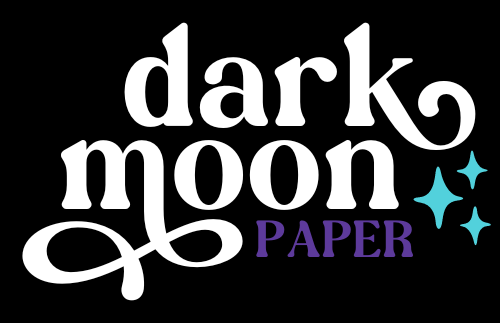
Why use planner stickers?
Planner stickers make organizing easy, fun, and personal! Add color, creativity, and structure to every page, transforming your planner into a tool that reflects you. Perfect for tracking, decorating, and staying inspired daily!
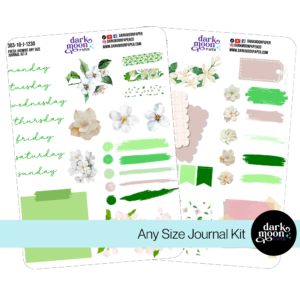
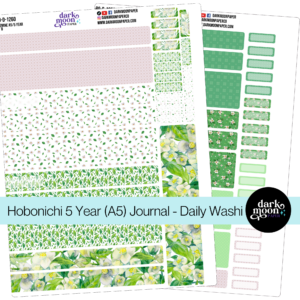
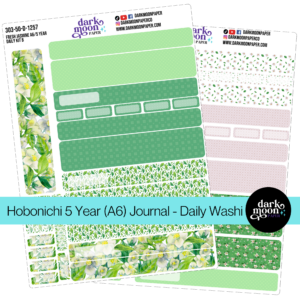
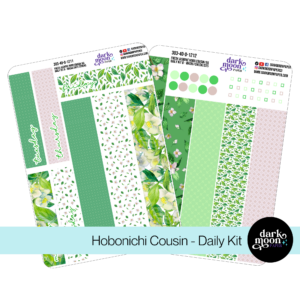
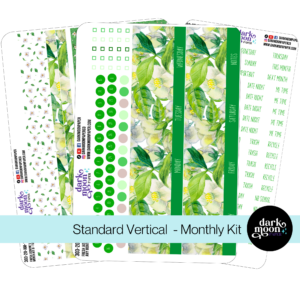
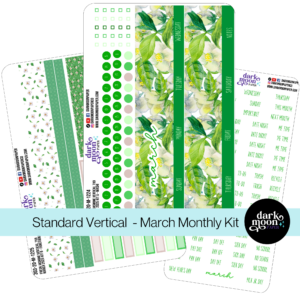
Hello and welcome!
I’m Rachael Snow, a lifelong artist and entrepreneur, and I started Dark Moon Paper to blend my love of art, technology, and the mysterious beauty of the world around us. My sticker kits are meant to set the mood, tell a story, and give you a little escape from the ordinary.
I work from my cozy studio tucked away in the beautiful woods of Oregon, surrounded by nature and a dark night sky full of stars.